Niigata Travel Guide: 15 Must-Visit Places, Food, And Amazing Photo Spots

Niigata extends north to south facing the Sea of Japan. Visitors love it for its delicious rice, sake, and seafood, along with its ski resorts and many breathtaking views. This guide introduces Niigata foods, fun activities and photogenic places within the prefecture.
Niigata - A Treasure Trove of Beautiful Scenery and Local Food
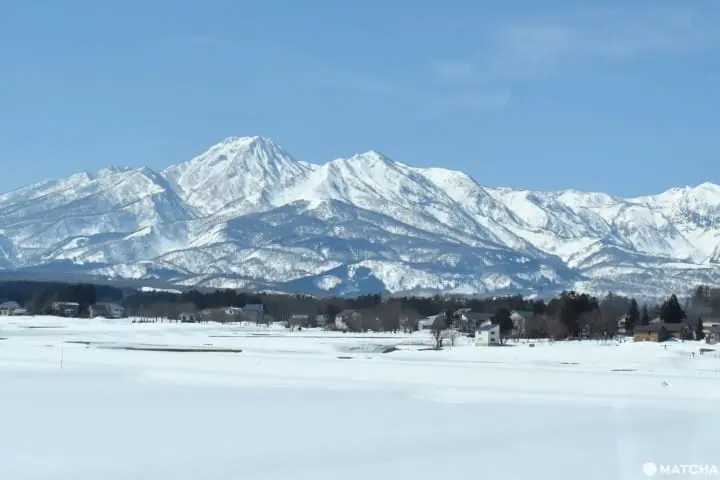
Picture from Setsugekka Train – An Unforgettable Three-Hour Ride Through Niigata’s Breathtaking Nature
Niigata is a treasure trove of amazing sights and regional cuisine. Renowned as Japan’s leading producer of top-notch rice and Japanese sake, you can also expect to eat amazing seafood here because Niigata Prefecture overlooks the Sea of Japan.
Niigata Prefecture
Niigata is located in the Chubu region of Japan's main island Honshu. Stretching long and thin from north to south, the prefecture is largely split into three areas starting from the west called Joetsu, Chuetsu, and Kaetsu, respectively.
There are direct flights operating from Taiwan Taoyuan International Airport to Niigata Airport, making it easily accessible for overseas visitors. For those traveling by train, it takes about two hours via the shinkansen (bullet train) from JR Tokyo Station to Niigata Station, which also makes it convenient to visit while traveling through Japan.
In this article, we’ll be introducing Niigata cuisine and must-see destinations within the prefecture.
1. Feel Like a Fisherman – Take a Tarai Bune Boat Ride

Picture courtesy of Niigata Prefectural Tourist Association
Sado Island is the largest island in the Sea of Japan on the western part of Niigata, reachable in approximately two hours by ferry from Niigata Port. Aside from being abundant in nature, the regional culture and traditions have been firmly passed down over the years.
One of Sado Isalnd's long-standing traditions is Isonegi fishing. It is a traditional fishing method that requires a glass box to search underwater while the fisherman is aboard a tub boat. The fishermen simultaneously use tools with sharp metal fittings to effectively catch seaweed and seafood.
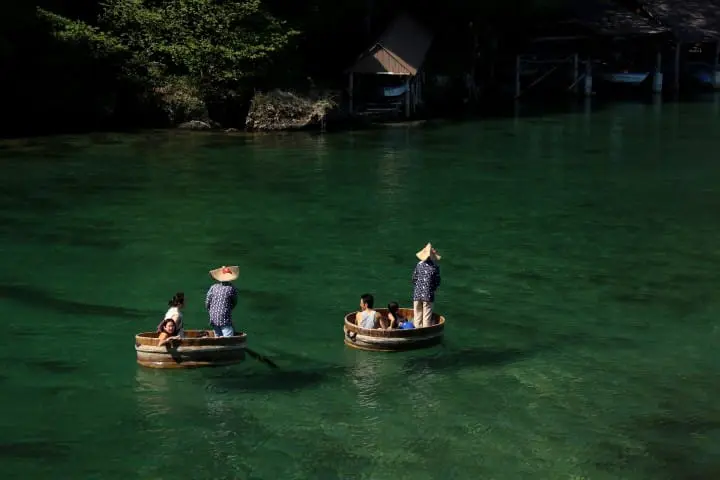
Picture courtesy of Niigata Prefectural Tourist Association
On the coastal Sado Island, you can experience a ride on this tarai bune (tub boat) yourself. This fun activity allows you to experience firsthand what it feels like to be a local fisherman. Why not check out this traditional experience that is special to Sado?
Tarai Bune (Yajima Experience Exchange Hall)
Address: Niigata, Sado, Ogi 365-1 Google Map
Business Hours: 8:00 – 17:00 (closed on October 21, November – March)
Official Website: http://enjoyniigata.com/en/detail/page/detail/5119
2. The Always-Beautiful Hoshitoge Rice Terraces
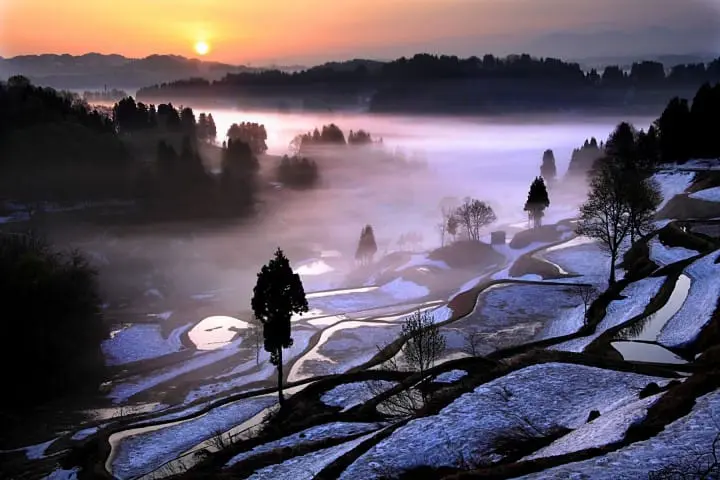
Picture courtesy of Niigata Prefectural Tourist Association
Niigata is a famous rice producing region in Japan. However, unlike the flat stretching rice paddies typically seen in the Japanese countryside, there are many terraced rice fields that use small plots of land for rice cultivation in Tokamachi City. The reason behind these scenic rice fields is that farmers could not secure enough land to plant rice in this mountainous area.
In the Hoshitoge Rice Terraces, there are 200 tiered rice terraces of varying sizes spread on the slopes. When the fields become filled with water, this photogenic scenery emanates a beauty that truly makes it seem as if you’re in another world.
In addition, the Hoshitoge Rice Terraces show a different scenery for every season and, in fact, every time throughout the day. In other words, these renowned rice terraces aren't something you'll grow tired of—regardless of when or how many times you visit. Not surprisingly, there are people who visit here several times a year.
Likewise, as the terraced rice fields are where farmers cultivate rice, please be mindful when visiting and practice good manners. These include staying behind the ropes placed around the fields, not entering the secured premises, and bringing home your trash.
Hoshitoge Rice Terraces
Address: Niigata, Tokamachi, Toge Google Map
Official Website: http://www.tokamachishikankou.jp/en/nature/
3. A Spectacular Display! The Nagaoka Festival Grand Fireworks Show
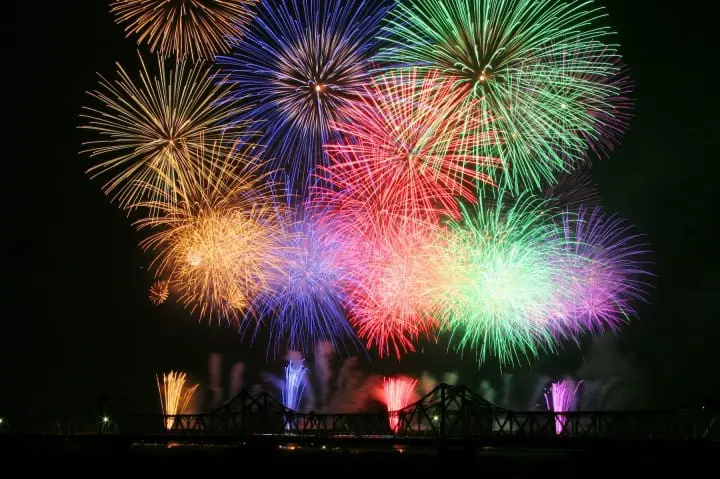
Picture courtesy of Niigata Prefectural Tourist Association
Ranked as one of Japan’s three major fireworks festivals, the Nagaoka Festival Grand Fireworks Show launches approximately 20,000 fireworks over a span of two days! It is a large-scale fireworks show hosted at the Shinano River—Japan’s longest and widest river—with over a million people visiting each year.
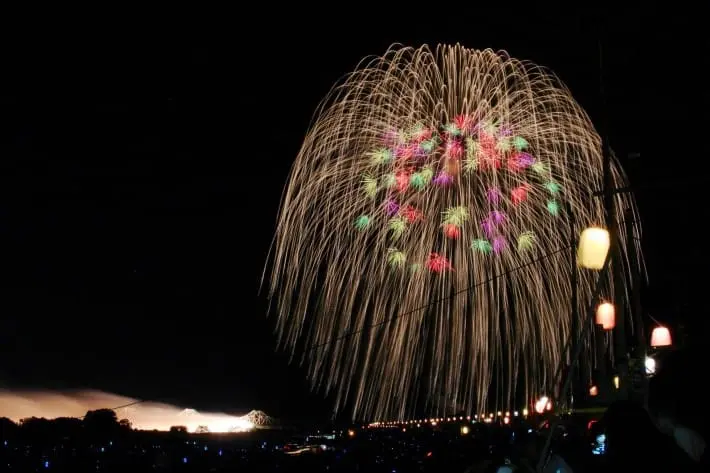
Picture courtesy of Niigata Prefectural Tourist Association
The highlight of the show is the Sho-Sanjakudama (*1), a spectacular burst of fireworks measuring 650 meters in diameter, and the Phoenix Fireworks that are launched one after another between a 1.7 kilometer span. The Phoenix Fireworks emerged after the devastating 2004 earthquake that hit the Chuetsu region—where Nagaoka is located—as an uplifting wish for recovery.
Once you see this show, the illuminating fireworks spanning across your eyes are sure to be an unforgettable sight. Even if your visit to Japan is only to see the Nagaoka Festival Grand Fireworks Show, you certainly won’t regret it.
*1 Sho-Sanjakudama: a type of shell firework with a 90-centimeter diameter and weighing 300 kilograms. It is the largest legally recognized firework (as of 2019).
Nagaoka Festival Grand Fireworks Show
Venue: Niigata, Nagaoka, Chosei Bridge, Downstream from the bank of the Shinano River Google Map
Official Website: https://nagaokamatsuri.com/ (Japanese)
4. The Retro and Trendy Nuttari Terrace Street
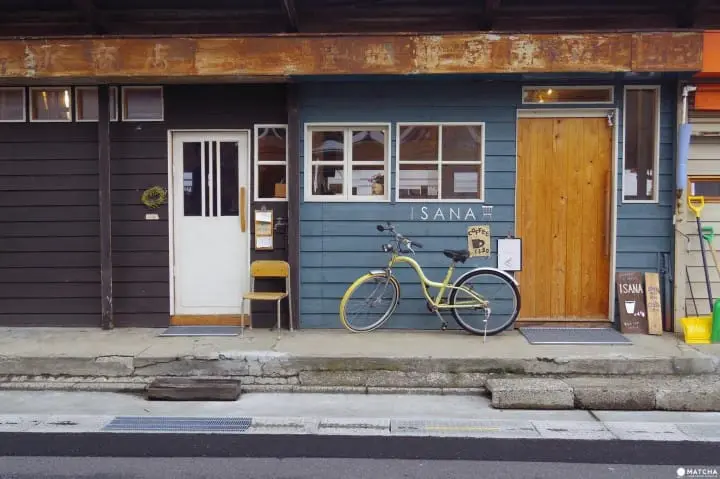
Picture from Niigata’s Retro-Cute Nuttari Terrace Street: Charming Cafés And Shops
Nuttari Terrace Street is gaining prominence for bringing new shops to an area that was once reduced to a street of shutters after several stores permanently closed.
A large variety of eclectic shops line the street. These include Aotogama, a shop that sells handmade ceramics, small goods, and accessories; ISANA, that sells not only furniture and hand dyed textiles but also where you can leisurely sip coffee; and Taruhi Glass Works, where visitors can try their hand at making glass beads.
Aside from shopping, another appeal of these quaintly-lined shops is directly talking with the store owners. While experiencing the warmth from conversing with others, why not take a stroll through Nuttari Terrace Street?
Nuttari Terrace Street
Address: Niigata, Niigata, Chuo, Nuttari Higashi 3-5 Google Map
Official Website: http://nuttari.jp/welcome-to-nuttari-terrace-street/
5. Enjoy Fresh Seafood at Teradomari Fish Market
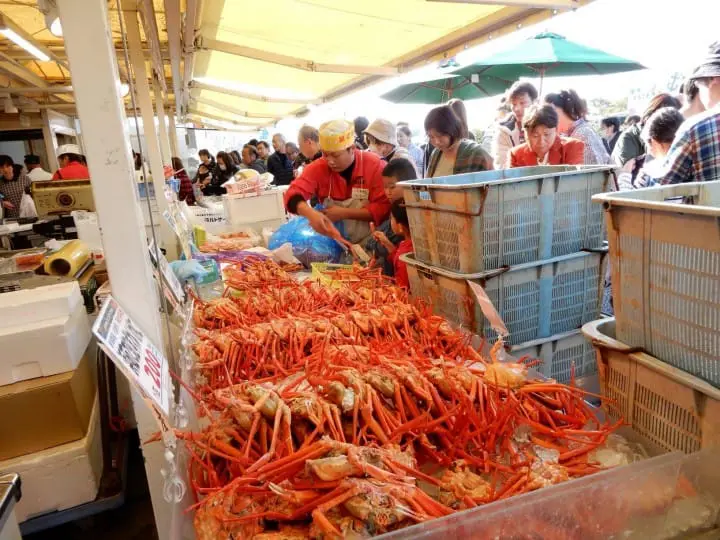
Picture courtesy of Teradomari Tourism Association
Teradomari Fish Market, affectionately called "Fish Ameyoko," is where fresh local seafood and an array of marine products from across the country converge.
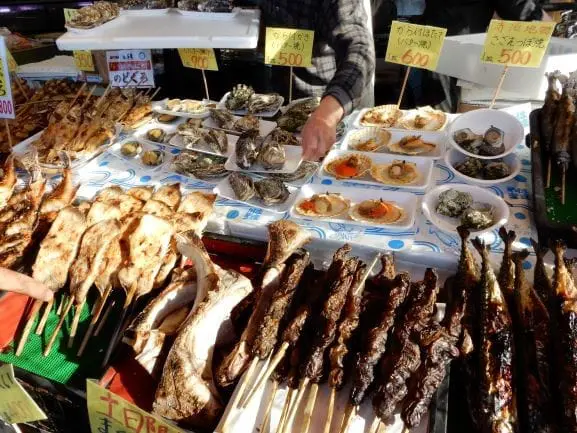
Picture courtesy of Teradomari Tourism Association
Some shops also operate during lunchtime, so it’d be a good opportunity to sample various foods while walking or enjoy a rice bowl topped with seafood. While soaking in the lively market atmosphere, you’ll easily be able to eat high-quality sea bounty like blackthroat seaperch, squid, and broiled fish grilled on the beach.
Teradomari Fish Market
Address: Niigata, Nagaoka, Teradomari, Shimoaramachi Google Map
Business Hours: 8:30 – 17:00 no holidays
Official Website: http://enjoyniigata.com/en/detail/page/detail/5113
6. Niigata City Aquarium Marinepia Nihonkai – Perfect for Couples and Families
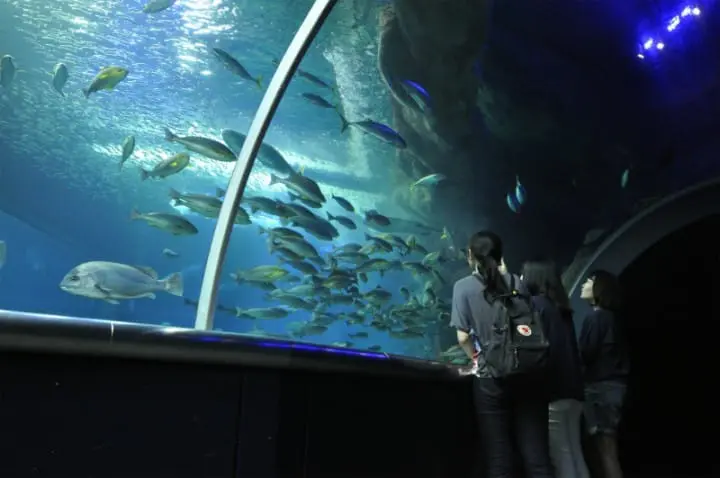
Picture courtesy of Niigata City Aquarium Marinepia Nihonkai
Niigata City Aquarium Marinepia Nihonkai is a facility that can be enjoyed by all ages. They have adorable penguins, seals, and other aquatic animals along with interactive tanks where visitors can touch live sea creatures.
The Marine Tunnel, which runs through the bottom of a gigantic water tank, will undoubtedly feel as if you’re underwater. Additionally, you can encounter many aquatic life forms that inhabit the Sea of Japan here.
Niigata City Aquarium Marinepia Nihonkai
Address: Niigata, Chuo, Nishifunamicho 5932-445 Google Map
Business Hours: 9:00 – 17:00 (ticket sales open until 16:30) Closed December 29 – January 1, the first Thursday of March and the following day
Official Website: https://www.marinepia.or.jp/mlg/en
7. Niigata Senbei Kingdom – Make Your Own Original Rice Cracker!

Picture from Make Your Own Senbei Crackers At The Niigata Senbei Kingdom!
When it comes to Japanese snacks, senbei comes to mind. A ubiquitous cracker made from rice, senbei is a well-known snack among Japanese people.
Niigata Senbei Kingdom is a fun facility where you can bake your own original senbei. Making a gigantic senbei measuring 25 centimeters in diameter—typically the size of a human face—will surely be a memorable activity.
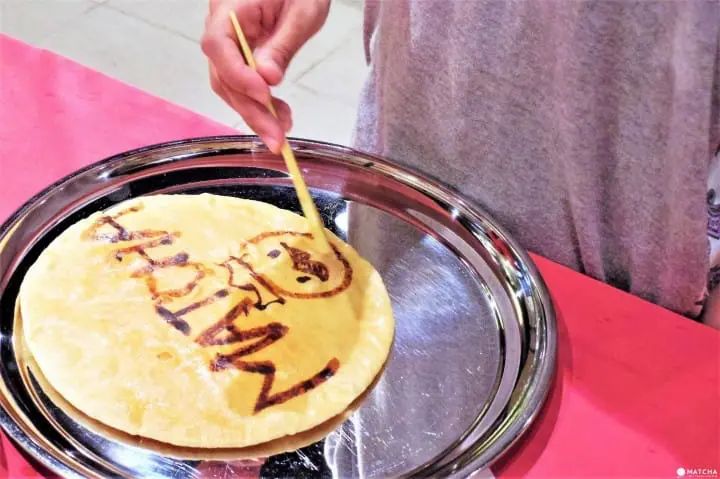
Picture from Make Your Own Senbei Crackers At The Niigata Senbei Kingdom!
You can draw whatever you want on your senbei using soy sauce to finish creating your one-of-a-kind rice cracker. Good luck in making your own senbei!
Niigata Senbei Kingdom
Address: Niigata, Niigata, Kita, Niizaki 2661 Google Map
Business Hours: 9:30 – 17:00
Official Website: http://senbei-oukoku.jp/ (Japanese)
8. Snow Activities at Gala Yuzawa Ski Resort
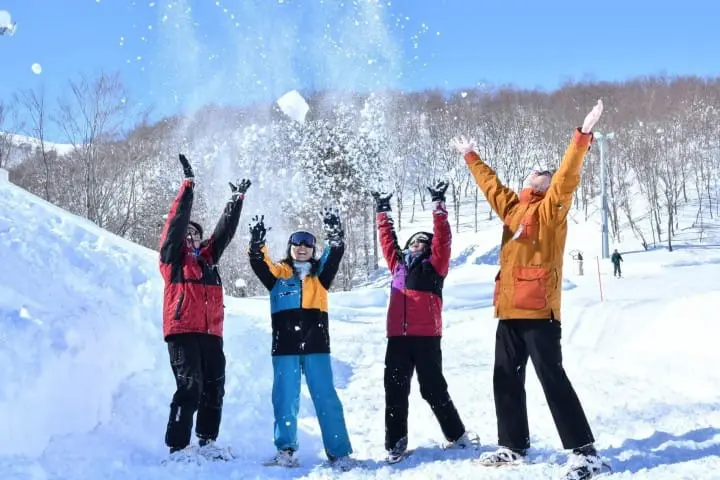
Picture from GALA YUZAWA – A Classic Ski Slope 90 Minutes From Tokyo!
When speaking of winter, everyone thinks of soft, fluffy snow. There must be many overseas visitors looking forward to skiing and other snow activities when they visit Japan in the wintertime.
Gala Yuzawa Ski Resort in Niigata not only offers ski lessons for beginners, but also has plenty of other activities you can enjoy, such as a walking excursion through the snowy mountains while wearing traditional snowshoes called kanjiki.
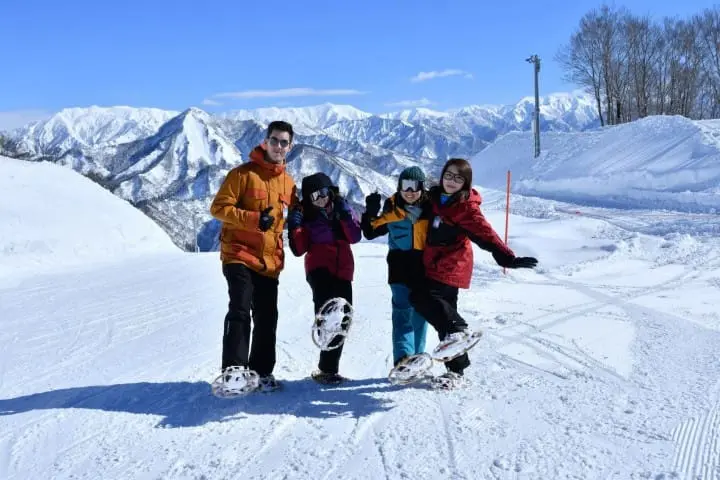
Kanjiki Tour Picture from GALA YUZAWA – A Classic Ski Slope 90 Minutes From Tokyo!
Ski lessons are conducted in English, Chinese, and Thai, so you need not to worry if you don’t understand Japanese. Many participants have never seen snow before, which makes this a safe experience for skiing beginners.
Access is great as it’s 90 minutes by shinkansen from JR Tokyo Station. Another great factor is that Gala Yuzawa Station is directly connected to the ski resort. How about experiencing your first time skiing in Niigata?
Gala Yuzawa Ski Resort
Address: Niigata, Minamiuonuma, Yuzawa-machi, Yuzawa 1039-2 Google Map
Business Hours: 8:00 – 17:00 (This may change depending on the weather and season, so it is necessary to check the website)
Official Website: https://gala.co.jp/winter/english/
9. Ponshukan – Sample Various Types of Japanese Sake

Picture from Taste Five Types of Japanese Sake For 500 Yen! Ponshukan In Niigata
One of Japan's largest rice producers, Niigata is also famous for their Japanese sake. They boast the highest number of sake breweries in the country and have been renowned for its rice wine since old times. It is befitting that Niigata has a facility where you can drink and compare five kinds of sake for just 500 yen.

Picture from Taste Five Types of Japanese Sake For 500 Yen! Ponshukan In Niigata
Ponshukan is a museum dedicated to local Niigata sake. It is loctaed the Niigata, Nagaoka, and Echigo-Yuzawa stations. Aside from taste testing, you can also purchase your favorite sake and local specialty products.
If you’re worried about what to get for souvenirs, you’ll be sure to find great products when visiting Ponshukan.
Ponshukan Niigata Station
Address: Niigata, Niigata, Chuo, Hanazono 1-96-47 Google Map
Official Website: https://www.ponshukan-niigata.com/ (Japanese)
Ponshukan Nagaoka Meihinkan (in Nagaoka Station)
Address: Niigata, Nagaoka, Jonaicho 1-611-1 CoCoLo Nagaoka 2F Google Map
Official Website: https://www.ponshukan-niigata.com/ (Japanese)
Ponshukan Echigo-Yuzawa Station
Address: Niigata, Minamiuonuma, Yuzawa-machi, Yuzawa 2427-3 Google Map
Official Website: https://www.ponshukan.com/ (Japanese)
10. Takada Park – 4,000 Cherry Trees in Full Bloom
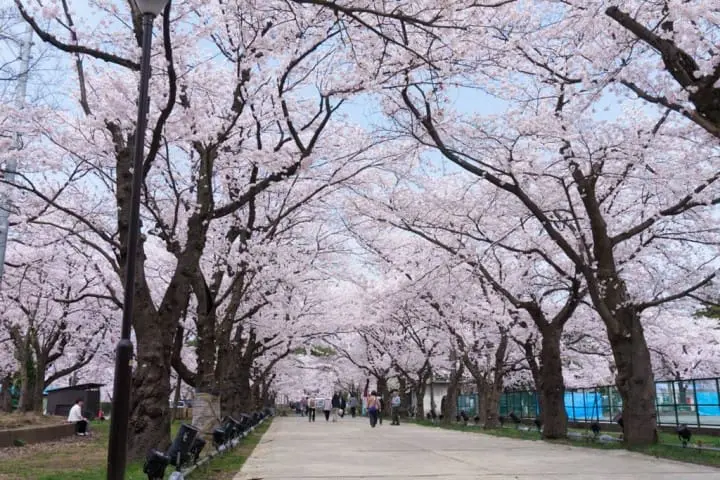
Picture from One Of Japan’s Top 3 Night Cherry Blossom Views: Takada Park, Niigata
Takada Park in Joetsu, Niigata is one of the top three famous night cherry blossom spots in Japan. It is a park where approximately 4,000 cherry blossom trees are in full bloom across 50 hectares of land. These blooming cherry blossoms that can be seen throughout the park are certainly a stunning sight.
Inside, you’ll find Sakura Road, a natural tunnel created by cherry blossom trees, as well the park's symbolic triple turret Takada Castle. Both attractions are perfect for taking pictures alongside the cherry blossoms.

Takada Castle Triple Turret (picture right) and the night blossoms. Picture from One Of Japan’s Top 3 Night Cherry Blossom Views: Takada Park, Niigata
An popular event called “Takada Castle Cherry Blossom Viewing for One Million People” is held around the time these seasonal blossoms bloom. During this annual event, colorful illuminations will light up in the evenings, giving it a romantic atmosphere that is different from the daytime. In particular, the stunning view of the triple turret castle and cherry blossoms reflecting on the water is something you’ll want to capture with your camera.
Shuttle buses to the venue are available from the East Exit of Joetsumyoko Station—situated along the Hokuriku Shinkansen. The easy accessibility is yet another appeal to Takada Park.
Takada Park
Address: Niigata, Joetsu, Motoshirocho 44-1 Google Map
Official Website: https://www.city.joetsu.niigata.jp/soshiki/toshiseibi/takada-park.html (Japanese)
11. Sado Gold Mine – A Historical Photo Spot
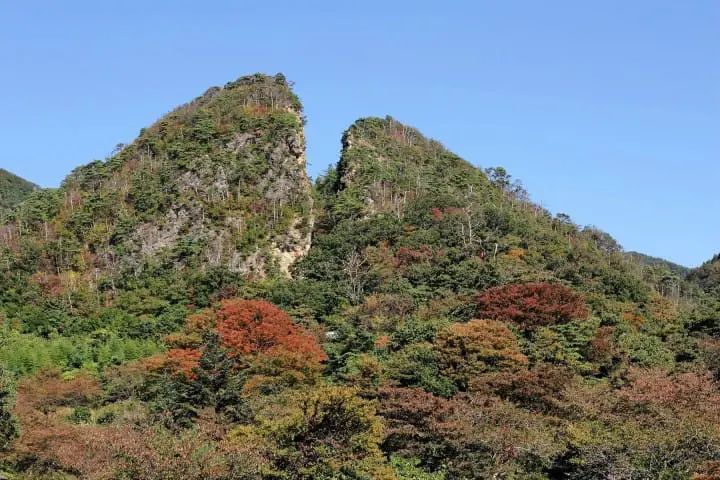
Doyu no Wareto (the gold mine's split mountaintop). Picture courtesy of Sado City World Heritage Promotion Section
The Sado Gold Mine on Sado Island was Japan’s largest gold and silver mine during the early modern period. It reached the height of prosperity during the Edo period (1603-1868) until it permanently closed in 1989—putting a close to its roughly 400-year heritage.
Once inside the Sado Gold Mine, you can see the mining site meticulously recreated with puppets. The tunnels, mine carts, and factory infrastructures actually used during its operation have also been preserved, which allows for a look into what the mine was like at the time.
Furthermore, these tunnels and mining sites have been designated as Important Cultural Properties as well as a Heritage of Industrial Modernization in Japan. It is also a prospective World Heritage Site.
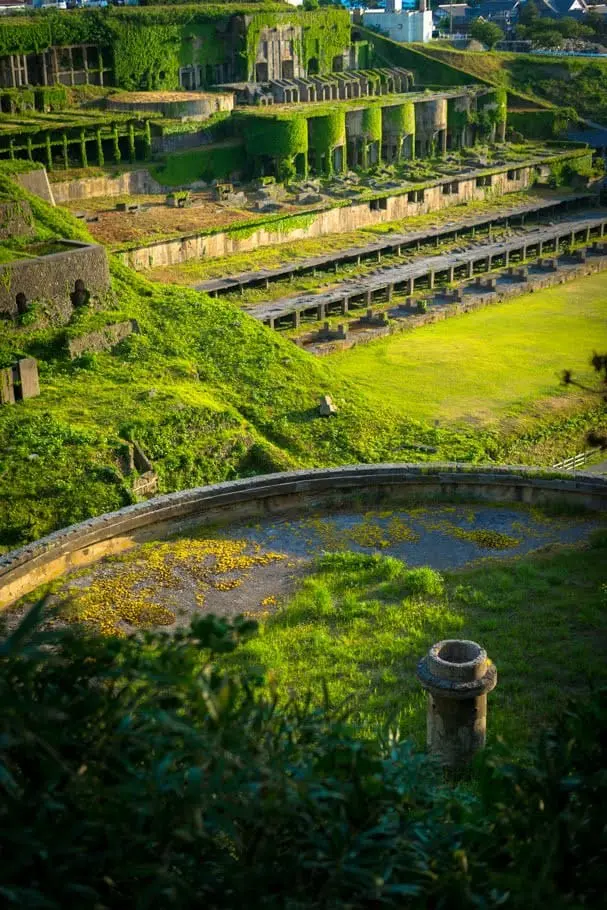
Kitazawa Flotation Plant Picture courtesy of Sado City World Heritage Promotion Section
Doyu no Wareto, an open mining site dating back to the Edo period, is a notable photo spot at Sado Gold Mine. It is said that the mountain was split into a V-shape as they dug into a gigantic vein of gold.
Approximately seven minutes by car from the gold mine is the Kitazawa Flotation Plant. This location is reminiscent of the backdrop in the Ghibli animation film “Laputa: Castle in the Sky."
This was also the first facility in Japan where the technology used in the copper manufacturing process was implememted on gold and silver. It is said that the plant processed over 50,000 tons of ores in one month.
Sado Gold Mine
Address: Niigata, Sado, Shimoaikawa 1305 Google Map
Official Website: https://www.sado-goldmine.jp/eng/
12. Toki Forest Park – Meet Scarce Birds like the Crested Ibises
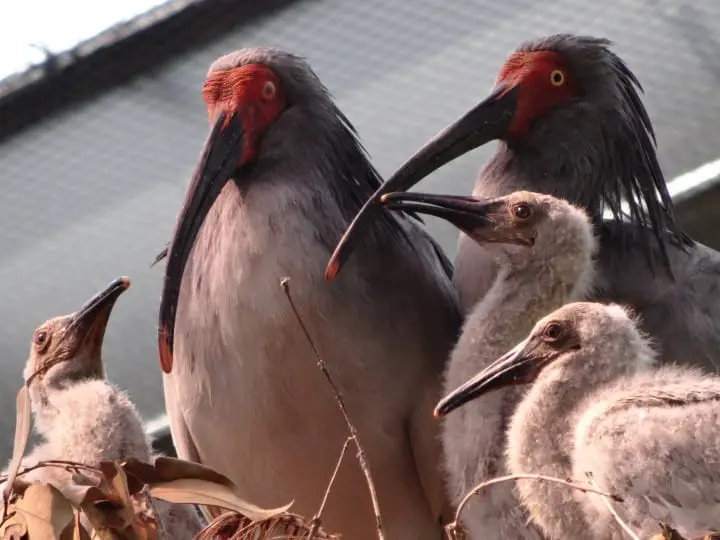
Picture courtesy of Sado City Department of Industry and Tourism Agriculture Policy Division
Do you know of a bird called toki, or the crested ibis? It is a bird species that once inhabited various regions in Asia but is now extinct in Japan due to overhunting and land development. Currently, the surviving offspring of crested ibises gifted from China are the only ibises to have survived the extinction.
The Sado Island is where the crested ibises lived in the wild until now. Toki Forest Park is where you can actually meet these scarce birds.
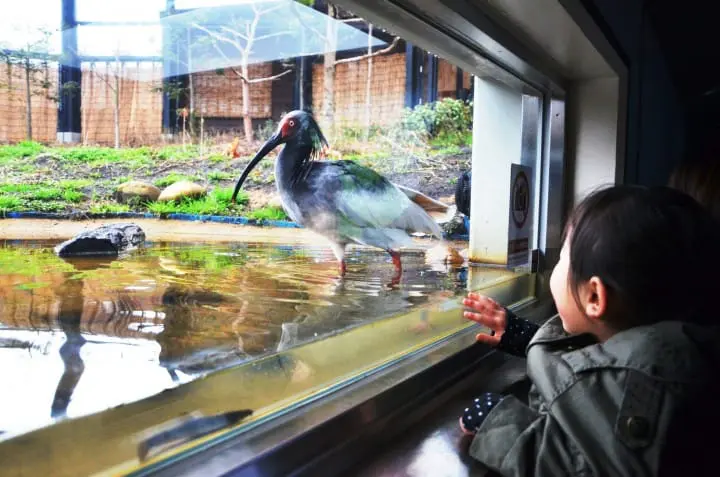
Picture courtesy of Sado City Department of Industry and Tourism Agriculture Policy Division
The Toki Rapport Plaza situated inside the park is a recreated environment where the crested ibises currently inhabit. Visitors can directly see the ibises in graceful flight within the cage's premises or pecking in search for loaches in the pond. If you want to learn more about the crested ibises, head to the Toki Materials Exhibition Hall. There, educational panels, video materials, and stuffed specimen are on display.
Toki Forest Park
Address: Niigata, Sado, Niibonagaune 383-2 Google Map
Business Hours: 8:30 – 17:00 Closed on Mondays (No closures during March – November) and during the New Year’s holiday
Official Website: http://tokinotayori.com/en/tokipark/
4 Must Eat Dishes in Niigata
Seafood

Picture courtesy of Niigata Prefectural Tourist Association
Niigata faces out towards the Sea of Japan and is where various fish species—such as red sea bream, Pacific bluefin tuna, and winter yellowtail—are locally caught.
Freshly caught seafood possesses delicious flavor that would impress any foodie. Because of its locality, you can savor delectable fish at relatively low prices.

Picture courtesy of Niigata Prefectural Tourist Association
Furthermore, Niigata is Japan’s premier producer of rice. Sushi made from this locally caught seafood and topnotch rice is a Niigata dish you certainly must sample.
Hegisoba Noodles
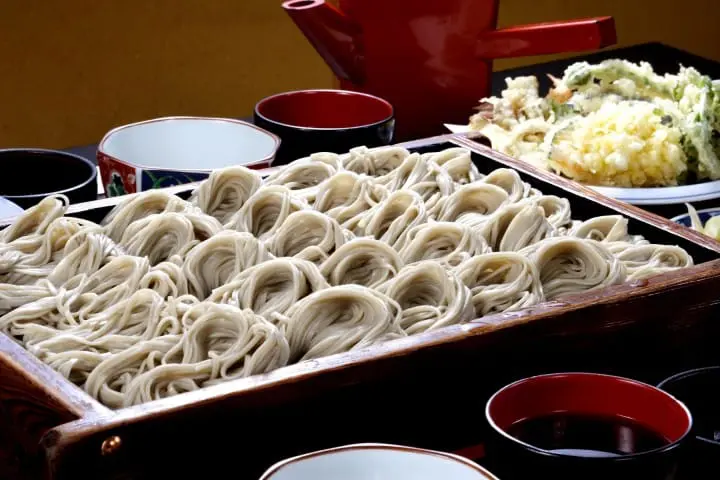
Picture courtesy of Niigata Prefectural Tourist Association
Hegisoba, a regional Niigata dish, is a type of soba (buckwheat noodles) made from a tsunagi (*2) of funori seaweed that is rounded into bite-sized bundles, then served in a container referred to as hegi.
The noodle dish's strong points are its smooth slide down your throat when you swallow and springy texture. It will undoubtedly become addictive. Funori seaweed is full of vitamins and minerals; it’s also said to help lower your blood cholesterol.
*2 Tsunagi: a substance used to stabilize something that crumbles or falls apart easily.
Murakami Beef

Picture courtesy of Niigata Prefectural Tourist Association
Murakami beef has a sweet, melt-in-your-mouth flavor. Murakami is also the name of a city in northern Niigata, where cattle are given feed made with Koshihikari rice straw and raised in a nature abundant environment.
Murakami beef—which can, naturally, be sampled in Murakami as well as in Niigata City—can be eaten in various ways from yakiniku (Japanese barbeque) and steak to sukiyaki and grilled skewers. It would be great to find this variety of wagyu at your favorite restaurants.
Tare Katsudon (Pork Cutlet)
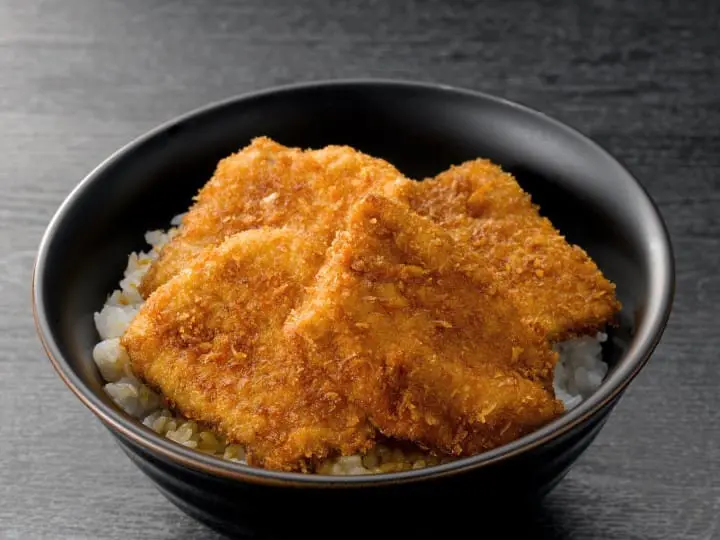
Picture courtesy of Niigata Prefectural Tourist Association
Katsudon eaten in Niigata is somewhat different from the katsudon often eaten in Japan. The typical katsudon is a fried pork culet that is simmered in a sweet soy sauce-based dashi stock and then served over rice with a beaten egg. However, the katsudon well-known among Niigata citizens is tare katsudon: a quick-fried pork cutlet steeped in a sweet and salty glaze.
The pork cutlet, covering the majority of the bowl, is permeated with a soy-sauce-based glaze that makes people consecutively fall in love with the dish once they try it. Please be sure to fully savor this regional dish when you visit Niigata.
Fully Enjoy Niigata Whenever You Visit!
Niigata Prefecture is a place that boasts a unique atmosphere thanks to its charms spannnig from stunning scenery to historical sites where the regional culture is deeply rooted. All four seasons have their own respective sights that you are sure to enjoy no matter how many times you visit.
If you’re tired of the major sightseeing areas, why not consider taking a trip to fully enjoy the amazing scenery and dishes in Niigata?
新潟生まれ。日本文化と古い建物が好きな社会人。日本を、地方を好きになってもらえるような記事を綴っていきたいです。















![[About 3 hours from Tokyo] 5 things to do in Murakami City, Niigata Prefecture](https://resources.matcha-jp.com/resize/720x2000/2023/12/08-155613.webp)


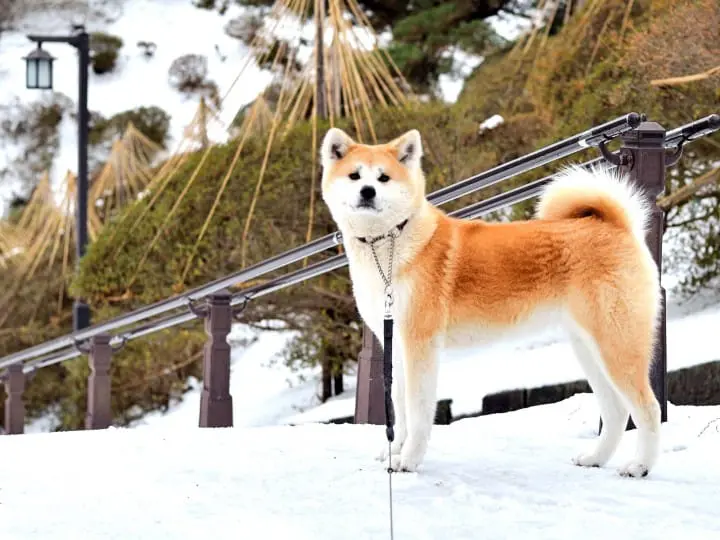































![[Coupon Available] Attention Overseas Winter Sports Fans! Nagano's Sports Depot Has Evolved](https://resources.matcha-jp.com/resize/720x2000/2026/01/05-254819.webp)
![[2 hours from Tokyo ] 10 Quiet and Breathtaking Views of Mount Fuji in Yamanashi Hokuto City , Yamanashi - Part 2](https://resources.matcha-jp.com/resize/720x2000/2025/12/16-253037.webp)

![[Reopening in March 2026] Ikoma Sanjo Amusement Park Park, 45 minutes from Osaka , with free admission](https://resources.matcha-jp.com/resize/720x2000/2024/08/28-194409.webp)